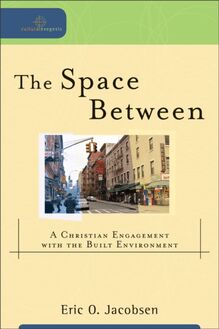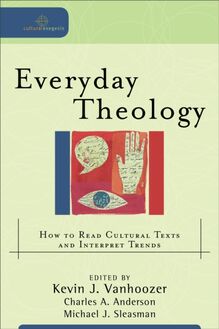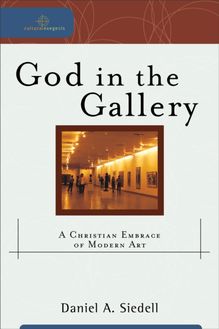-
 Univers
Univers
-
 Ebooks
Ebooks
-
 Livres audio
Livres audio
-
 Presse
Presse
-
 Podcasts
Podcasts
-
 BD
BD
-
 Documents
Documents
-
- Cours
- Révisions
- Ressources pédagogiques
- Sciences de l’éducation
- Manuels scolaires
- Langues
- Travaux de classe
- Annales de BEP
- Etudes supérieures
- Maternelle et primaire
- Fiches de lecture
- Orientation scolaire
- Méthodologie
- Corrigés de devoir
- Annales d’examens et concours
- Annales du bac
- Annales du brevet
- Rapports de stage
La lecture à portée de main
Vous pourrez modifier la taille du texte de cet ouvrage
Découvre YouScribe en t'inscrivant gratuitement
Je m'inscrisDécouvre YouScribe en t'inscrivant gratuitement
Je m'inscrisEn savoir plus
Vous pourrez modifier la taille du texte de cet ouvrage
En savoir plus

Description
Sujets
Informations
| Publié par | Baker Publishing Group |
| Date de parution | 01 août 2008 |
| Nombre de lectures | 0 |
| EAN13 | 9781585588466 |
| Langue | English |
Informations légales : prix de location à la page 0,0749€. Cette information est donnée uniquement à titre indicatif conformément à la législation en vigueur.
Extrait
I was humbled and inspired by Craig Detweiler s encyclopedic work. As a Christian screenwriter in postmodern Hollywood, I struggle every day to find the intersection between my faith and my craft. Into the Dark illuminates many such points of cohesion but in places one wouldn t think-or even dare-to look. Detweiler could have easily restricted his analysis to softer cinema: the anemic family dramas or self-important epics that try to pass as spiritual fare. Instead he chose to find wisdom in film s most profound shadows. As a result, Into the Dark does more than inform; it invites us to open our eyes and discover the divine in even the most brutal of movies.
- Matt Greenberg , screenwriter of 1408 and Reign of Fire
Hallelujah! What a refreshing book. Rather than the usual fruitless wholesale condemnation of modern culture, Craig Detweiler has delivered a theologically truthful and joyous exploration of one of the most powerful forces in today s overwhelmingly visual society-the movies.
- Valerie Mayhew , former television writer; the Brehm Center for Worship, Theology, and Art, Fuller Theological Seminary
Many books on the intersection of Christian theology and popular culture cut to the chase of cultural engagement without taking the time to develop the plotline of theological method. Thankfully, Craig Detweiler takes the time to explicate his method before engaging some of the most compelling films of our day. I ve had the pleasure of sitting in a movie theater with Craig and of talking about the film over a cup of coffee afterward. Now you have that chance, too, with Into the Dark . I can think of no better companion than Craig to help us reflect on the most important storytelling medium of our time.
- Tony Jones , author of The New Christians: Dispatches from the Emergent Frontier and national coordinator of Emergent Village
William A. Dyrness and Robert K. Johnston , series editors
The Cultural Exegesis series is designed to complement the Engaging Culture series by providing methodological and foundational studies that address the way to engage culture theologically. Each volume works within a specific cultural discipline, illustrating and embodying the theory behind cultural engagement. By providing the appropriate tools, these books equip the reader to engage and interpret the surrounding culture responsibly.
Into the Dark
S EEING THE S ACRED IN THE T OP F ILMS OF THE 21 ST C ENTURY
Craig Detweiler
2008 by Craig Detweiler
Published by Baker Academic a division of Baker Publishing Group P.O. Box 6287, Grand Rapids, MI 49516-6287 www.bakeracademic.com
Printed in the United States of America
All rights reserved. No part of this publication may be reproduced, stored in a retrieval system, or transmitted in any form or by any means-for example, electronic, photocopy, recording-without the prior written permission of the publisher. The only exception is brief quotations in printed reviews.
Library of Congress Cataloging-in-Publication Data
Detweiler, Craig, 1964-
Into the dark : seeing the sacred in the top films of the 21st century / Craig Detweiler. p. cm. - (Cultural exegesis) Includes bibliographical references (p. ). ISBN 978-0-8010-3592-0 (pbk.) 1. Motion pictures-Religious aspects. 2. Motion pictures-Moral and ethical aspects. I. Title. PN1995.5.D48 2008 791.43 682-dc22
2008010374
Unless otherwise indicated, Scripture quotations are from the HOLY BIBLE, NEW INTERNATIONAL VERSION . NIV . Copyright 1973, 1978, 1984 by International Bible Society. Used by permission of Zondervan. All rights reserved.
Scripture quotations labeled RSV are from the Revised Standard Version of the Bible, copyright 1952 [2nd edition, 1971] by the Division of Christian Education of the National Council of the Churches of Christ in the United States of America. Used by permission. All rights reserved.
Scripture quotations labeled KJV are from the King James Version of the Bible.
Scripture quotations labeled ESV are from The Holy Bible, English Standard Version, copyright 2001 by Crossway Bibles, a division of Good News Publishers. Used by permission. All rights reserved.
Scripture quotations labeled NRSV are from the New Revised Standard Version of the Bible, copyright 1989, by the Division of Christian Education of the National Council of the Churches of Christ in the United States of America. Used by permission. All rights reserved.
Contents
Preface: A Hornet s Nest
1. Methodology: Into the Darko
Part 1: Identity
2. Memento : Duped in Film Noir
3. Eternal Sunshine : The Risky Rewards of Romance
Part 2: Community
4. Crash ing into the Ensemble Drama: Communities in Crisis
5. Talk to Her (and Him and Us): Everyday Ethics
Part 3: History
6. Finding Neverland : Nostalgia and Imagination in History
7 . Spirited Away by Fantasy: Tending the Garden
8. Conclusion: Mnemonic Devices
Appendix A: Top 250 Movies as Voted by IMDb Users (January 1, 2007)
Appendix B: The IMDb s Top Films of the 21st Century (January 1, 2007)
Appendix C: The IMDb s Top Films of the 21st Century (April 15, 2008)
Notes
Movies Cited
Preface A Hornet s Nest
I want to live where soul meets body. Death Cab for Cutie 1
An eight-year-old boy builds a house out of Lego blocks. He faces two obstacles: the orange shag carpeting that destabilizes everything that rests on it and the television. With the shag carpeting winning the war of (de)construction, the television becomes the primary distraction. The boy s mother is watching a war film starring Rock Hudson. It follows an American commando unit, dropped behind enemy lines in World War II Italy, assigned to blow up a bridge. When most of Rock Hudson s unit is killed, who become his allies? A gang of Italian street kids led by the defiant, cigarette-smoking Aldo. Rock becomes a surrogate father for the orphaned boys, training them to serve as a guerrilla army.
To a child raised on a steady diet of Sesame Street , the violence pouring from the television screen both attracts and repels. He can t bear to watch, and he can t imagine looking away. When Rock has the boys strip down to their underwear and frolic in the water in order to distract the enemy, it seems like a brilliant strategy. Hornet s Nest was made well before Rock Hudson s highly publicized death from AIDS in 1985. What may play as gay kitsch today worked as solid action-adventure for me as a young boy watching television in 1972. At the conclusion of the movie, with the mission endangered, Aldo, the gang leader, steps up. He climbs behind a submachine gun and blasts away at the Nazis who murdered his parents. Aldo makes a valiant effort, but he dies in a hail of bullets. As an eight-year-old, I was shaken to the core by Aldo s on-screen death. I shed real tears, as if I had lost a genuine friend or a close family member. I didn t understand how movies were made or how Ennio Morricone s score may have manipulated my emotions. Concepts like honor , sacrifice , and community would come much later. All I knew at that moment was that movies had a revelatory power to move me greater than any book, toy, or person I d ever met.
Hornet s Nest is no cinematic classic. It hasn t even been deemed worthy of a DVD release. Rare, scattered copies remain on VHS for a decidedly limited fan base. Nevertheless, it propelled me on a lifelong obsession with film. From that moment on, I feigned Lego building on the floor as an excuse to watch movies on television. I pursued the chills, thrills, and pathos that washed over me in Hornet s Nest . Kids movies like That Darn Cat would no longer suffice. I wanted truly moving pictures-the kind adults watched. I begged my parents to let me see a PG-rated movie in the theater. For my tenth birthday, I saw Irwin Allen s disaster film, The Towering Inferno (1974). It packed chills, thrills, and pathos into a burning high-rise. I was hooked on cinema-a fan for life.
I found a blank check register in my parents closet. It had forty-three two-sided pages with room for thirty entries per page. This became my movie log: a place to record what I saw, when I saw it, and what I thought of it. I gave Hornet s Nest four stars. The special effects in The Towering Inferno seemed even more overwhelming on the big screen. It received four and a half stars. I was officially a movie critic, engaged in an active response to film. As the check register slowly filled up, my attention to detail grew. I started making lists of movie stars and noting the films in which I d seen them. John Wayne, Clint Eastwood, and Sean Connery dominated the movie matinees on after-school TV. As I paid more attention to the credits, I discovered character actors like Ben Johnson, L. Q. Jones, and Richard Jaeckel getting plenty of supporting roles. When my hormones kicked in, I suddenly noticed Jill St. John, Connie Stevens, and Raquel Welch. Soon the lists included directors as well, with Alfred Hitchcock and John Ford dominating my register.
As the lists grew longer, my print grew smaller. It was tough to squeeze in all the movies Burt Reynolds was making. And I couldn t keep the actors in anything resembling alphabetical order. My record keeping had become an unwieldy chore. How to manage my scattered shards of movie memories? My trustiest companions were dog-eared copies of Leonard Maltin s Movie Guide and Ephraim Katz s comprehensive Film Encyclopedia . 2 They provided acres of alphabetized entries, perfect for perusing during late-night TV viewing. But they couldn t be updated immediately (although Maltin publishes new editions every year). They also couldn t be cross-referenced, like a dynamic database. If only I d had the foresight (and ability) to create the Internet Movie Database!
The check register allowed me to track my viewing habits through my tumultuous teenage years. I grew up in Charlotte, the largest city in North Carolina. Frustrated in his attempts to control the city during the Revolutionary
-
 Univers
Univers
-
 Ebooks
Ebooks
-
 Livres audio
Livres audio
-
 Presse
Presse
-
 Podcasts
Podcasts
-
 BD
BD
-
 Documents
Documents
-
Jeunesse
-
Littérature
-
Ressources professionnelles
-
Santé et bien-être
-
Savoirs
-
Education
-
Loisirs et hobbies
-
Art, musique et cinéma
-
Actualité et débat de société
-
Jeunesse
-
Littérature
-
Ressources professionnelles
-
Santé et bien-être
-
Savoirs
-
Education
-
Loisirs et hobbies
-
Art, musique et cinéma
-
Actualité et débat de société
-
Actualités
-
Lifestyle
-
Presse jeunesse
-
Presse professionnelle
-
Pratique
-
Presse sportive
-
Presse internationale
-
Culture & Médias
-
Action et Aventures
-
Science-fiction et Fantasy
-
Société
-
Jeunesse
-
Littérature
-
Ressources professionnelles
-
Santé et bien-être
-
Savoirs
-
Education
-
Loisirs et hobbies
-
Art, musique et cinéma
-
Actualité et débat de société
- Cours
- Révisions
- Ressources pédagogiques
- Sciences de l’éducation
- Manuels scolaires
- Langues
- Travaux de classe
- Annales de BEP
- Etudes supérieures
- Maternelle et primaire
- Fiches de lecture
- Orientation scolaire
- Méthodologie
- Corrigés de devoir
- Annales d’examens et concours
- Annales du bac
- Annales du brevet
- Rapports de stage












